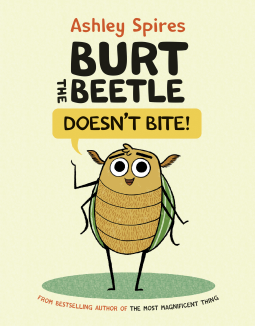Illumibugs: Explore the World of Mini Beasts with your Magic 3 Color Lens by Barbara Taylor is an interactive book that takes readers on a journey through the undergrowth with a magic three-color lens (included with the print edition) to discover over 180 minibeasts from every continent, under the sea, and even from prehistoric times. With your lens in hand, discover mini beast habitats, and learn more about the impressive insects and other creepy crawlies that scuttle and wriggle around the world. Your green lens reveals a habitat, spanning 7 continents, under the sea, and prehistoric times. Learn about the particular environments and challenges that minibeasts face here. Your red lens brings to life insects including beetles, butterflies, moths, flies, and wasps. Your blue lens uncovers the other invertebrate creepy crawlies from different mini beast families including worms, snails, and spiders. Fact pages fill in the details and guide you through a world bursting with life and color. Innovative illustrations from award-winning design duo Carnovsky make this a natural history like no other, with hundreds of places, plants, and creatures to discover on three layers of detailed artwork.
Illumibugs will capture the attention and interest of many young readers, and those that might be sharing the read with them. This is a book that I very much suggest reading in print rather than digital, because of the effects intended to be created with the three color lenses that are included with the book. The digital copy does come with a QR code that allows readers to simulate the effects of the color lens, but I think the hands on version might be more fun for more tactile focused readers, while the digital version would be great for those that prefer digital devices or need to use adaptive technology. That being said, I thought the creativity and page layouts were very well done. I also thought that the information shared for each region and the creepy crawlies that live there were well chosen and well written. The information about each continent and the habitats was also well done. I like that a the chosen creatures showed some drastic differences between habitats while also showing how some creatures are different variations on the same species all around the world, and under the water. While not a comprehensive book about insects, arachnids, and other things considered bugs, this book could easily capture and keep the attention of young readers and spark interest and curiosity for further research. I think it will also hold up to repeated reads and studies with the colored lenses and without, just to see what things they might see that were previously missed.



